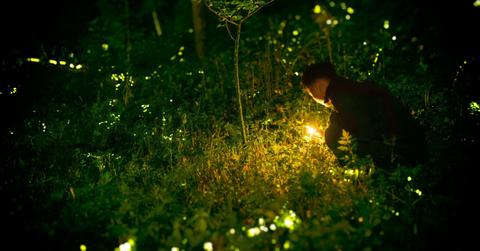Once a Sign of Summer, Are Fireflies Now a Thing of the Past?
Have we seen the last of the fireflies?
Published June 13 2025, 9:28 a.m. ET

Fireworks get a lot of attention when it comes to the shows that light up our sky during the summer. However, Mother Nature has quite a few tricks up her sleeves as well, and the lights of a firefly can offer some stiff competition when it comes to dazzling displays of light.
But not everyone is getting to see these insects in all of their glory any longer, as the population of many species of fireflies has dwindled over the years.
Some breeds of the bug have nearly disappeared in recent years, leaving many to wonder if fireflies are endangered. To find the answer to this, and to find out what's behind the steep decline in firefly populations, you'll need to keep reading.

Are fireflies an endangered species?
In 2024, the U.S. Fish and Wildlife Service considered adding fireflies to the endangered species list for the first time. According to the proposal, it was the Bethany Beach firefly that had caught the agency's attention. The insect — which calls areas of Delaware, Virginia, and Maryland home — had been facing a range of issues thanks to climate change, which included a disruption of their natural habitat due to rising sea levels and diminished groundwater aquifers.
According to the Xerces Society for Invertebrate Conservation, the Bethany Beach fireflies aren't the only ones in danger. An additional 11 other species — including the loopy five firefly, pointy-lobed firefly, and the belted firefly — are also on the list. Then, another six species are considered vulnerable due to their declining numbers.
What happened to fireflies?
It may come as no surprise to find out that the reason for the declining population of fireflies across the U.S. has to do with humans.
The Xerces Society for Invertebrate Conservation notes a few key elements affecting their populations, and they include:
- Climate change-related drought
- Habitat loss
- Light pollution
- Pesticide use
- Lack of research
So, what's the answer? According to Xerces, it's increased involvement from community scientists.
The organization hopes that these experts will be able to review data to determine which species are most at risk, and then work with different subject matter experts like land managers and researchers to reassess the conservation efforts that are already in place. From there, the organization believes that they may begin to work on restoring the habitats of the fireflies in our country, and even respond to some of the other threats on the list.
Of course, by now we all know that fighting against climate change will take more than just a handful of community-minded experts. A global change will need to be made to deal with many of the issues impacting these insects, including the rising sea levels that are putting so many coastal bugs at risk.
Whether we'll be able to do enough, and act quickly, will remain to be seen. For now, we know that summers are at risk of losing one of their most popular draws, leaving the nights a little darker as a result.